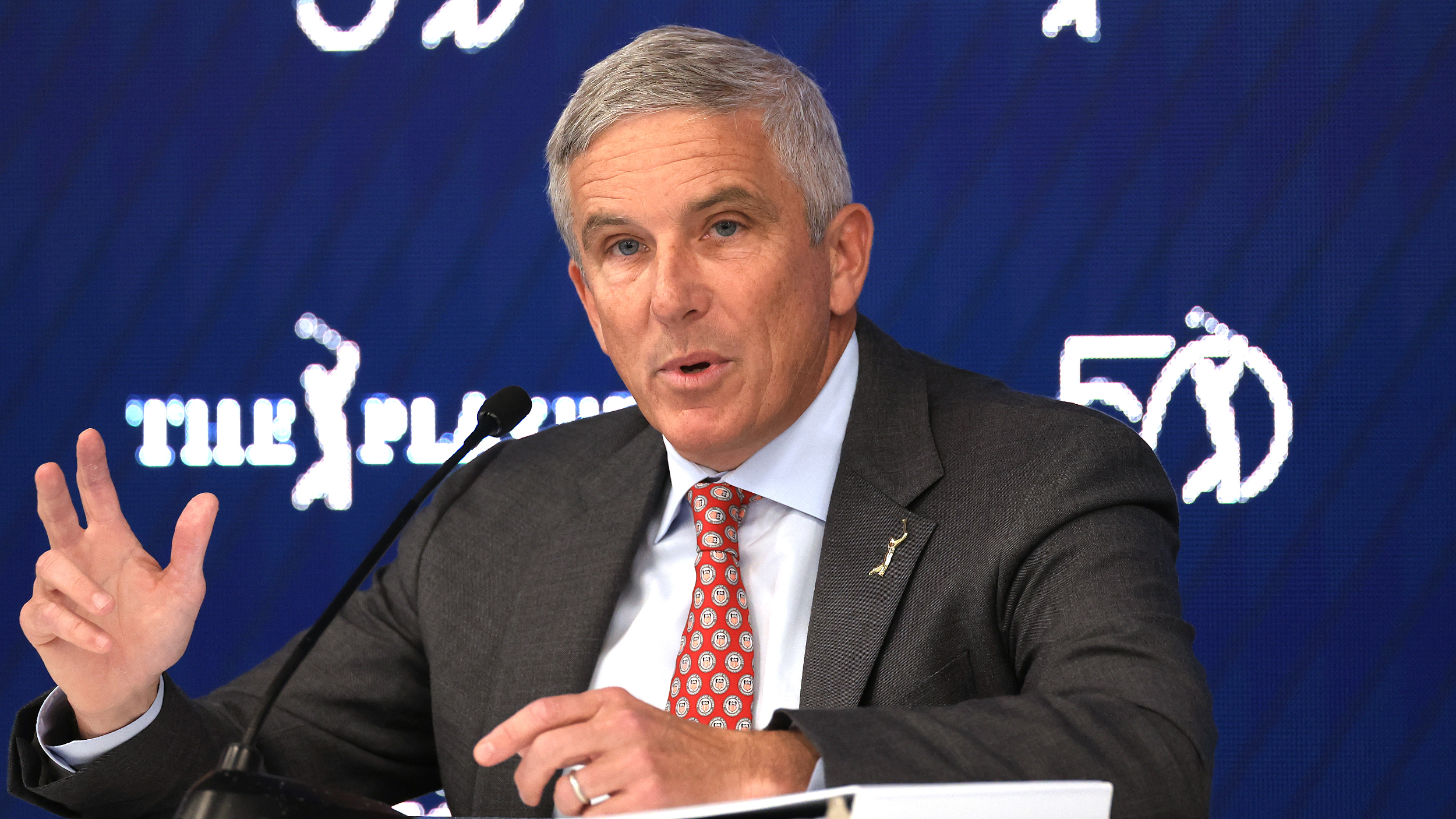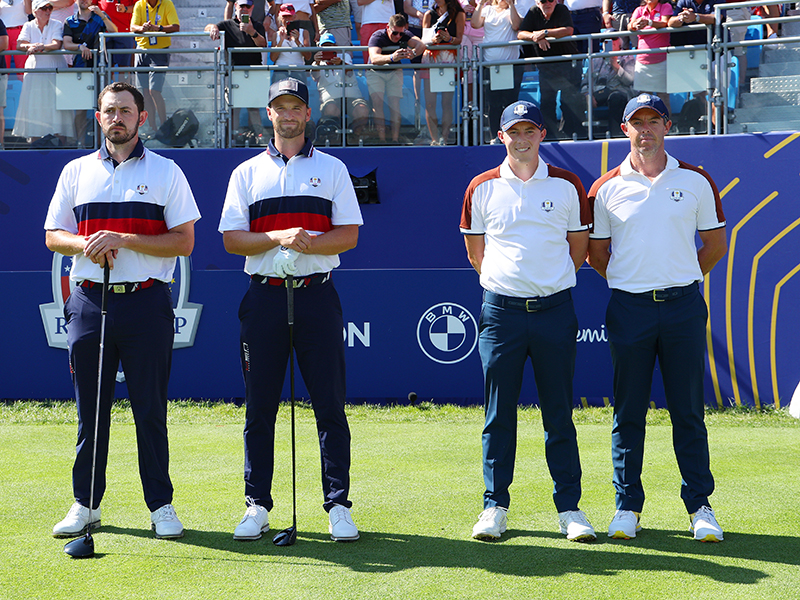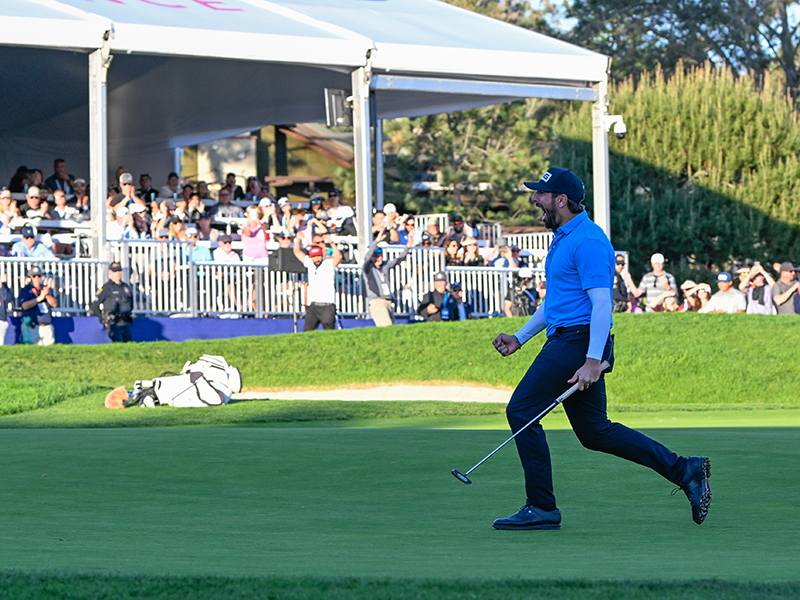
Once again, the golfing world is holding its collective breath in anticipation of an announcement from the PGA Tour about its next chapter. There’s still so much up in the air – namely if Saudi Arabia’s PIF will be involved and in what guise if so – but we do know two key things at this point.
Firstly, the PGA Tour struck a $3 billion deal with Strategic Sports Group (SSG) at the end of January. Secondly, last week, details were released about the composition of the board of directors at PGA Tour Enterprises – a new for-profit organisation spawned from the golfing world’s ongoing tumult.
Jay Monahan will serve as chief executive of the organisation, while Tiger Woods will take up a role as vice-chairman of the board. The 11 other board members are comprised of players, SSG investors – including Fenway Sports Group president John Henry – and PGA Tour representatives.
“Our current and former players will provide essential insight into our members’ priorities and needs,” said Monahan. “And we welcome key SSG members to the leadership team, whose exceptional track records and achievements in global professional sports will lend a wealth of knowledge into the opportunities ahead for the PGA Tour. Their expertise will undoubtedly play a pivotal role in the success and growth of our commercial initiatives.”

That’s the extent of our knowledge at this point. Monahan did address the media ahead of the Players Championship, but as has often been the case of late, there was very little in the way of actual substance. There will clearly need to be a return on SSG's substantial investment, though.
You’d assume the schedule for the rest of 2024 will remain untouched, but what happens beyond that is anyone’s guess. Will there be any sort of merger with LIV? Can the DP World Tour change sides and abandon the strategic alliance it signed with the PGA Tour before the new entity was formed? How will the season be structured in terms of events, sponsorship and field sizes?
On the last point above, I think the PGA Tour needs to tread extremely carefully. Rory McIlroy came out last week in favour of a more “cut-throat” circuit and fewer cards. In short, he wants smaller fields with less journeymen. While he’s no longer on the PGA Tour policy board, he still holds significant sway.
At the Arnold Palmer Invitational, Wyndham Clark was asked about McIlroy’s comments and created some headlines of his own. "I mean, I think it would be amazing if our Tour was a hundred guys," he said. "A hundred guys and we have 20 guys that get relegated every time, every year, and it doesn't matter who you are. It would be simple, because you know these hundred guys have a card and, no matter what, they're playing in the events and there's no, you know, this guy gets in or whatever sponsor invites.”

While this isn’t anything new, I find it troubling that two of the tour’s top players are espousing this concept at a time of great uncertainty. If the PGA Tour does end up going in this direction, I’d strongly object on two fronts: hypocrisy and quality of product. Let’s deal with the first one here.
The PGA Tour’s main point of difference against the increasingly popular LIV Golf is history, prestige and proper competition. Those are also the arguments that have been propagated over the last couple of years in an attempt to play down the relevance of the Saudi-backed circuit. The more elements that are borrowed from LIV, the more the PGA Tour weakens and devalues its own offering.
At this moment in time, the tour’s set-up just about works. There is some merit to the signature events structure, because there are passageways into the bigger tournaments for lesser lights and relatively unknown players in the middle of purple patches. That said, you could argue the other events have been needlessly weakened as a result – something that’s contributed to a number of sponsors withdrawing from the PGA Tour over the last year or so.

However, on balance, knowing where the tour’s best players are going to compete at the start of the year makes a lot of sense from a watchability and commercial perspective.
My concern is that taking the current model further would erode the line of delineation between the PGA Tour and LIV Golf. Currently, some signature events don’t have a cut, which I think is a big mistake. If all of them were to eschew a cut in a move to keep all the tour’s best players around for four days, it would feel more and more like an exhibition – one of the key criticisms levelled at LIV.
Add in closed-shop fields that are set at the start of the year, fewer players and promotion/relegation and you’re starting to closely resemble the thing you’re telling golf fans you’re far more compelling than.
Also, as far as I’m concerned, smaller fields don’t guarantee better tournaments. In fact, often it can be quite the opposite. The Arnold Palmer Invitational was a perfect example. There were only 69 players in the field and it definitely lacked something as a result. Also, the final round was something of a damp squib. You could argue that was because of Scottie Scheffler’s brilliance, but you could also make the case that if more players were in the field, one or more of them could have pushed Scheffler and created some actual drama.
The seemingly increasing obsession with having the best and only the best at certain events has to stop. I understand why having the top players in a field makes sense, but why should second-tier players and lesser lights be excluded? These golfers often provide excellent storylines and offer a contrast to the game’s best players, with whom we’re all familiar.
If the 100 players were set in stone at the start of this season, we wouldn’t have seen Nick Dunlap becoming the first amateur to win on the PGA Tour in 30 years, we wouldn’t have watched formed nightclub bouncer Jake Knapp claim his first title and we’d have missed Matthieu Pavon triumphing at Torrey Pines and unexpectedly surging to the top of the FedExCup standings.
At the Cognizant Classic, 42-year-old Englishman David Skinns was the 54-hole leader and he went on to record his best finish on the PGA Tour. Back in 2020, he was working as a delivery driver during the Covid pandemic.

Second-tier players don’t dilute the offering, they enhance it. I don’t see what impact this has on the top players, either. If they’re at the top of the leaderboard, as they should be, they will get ample coverage; if not, someone new will take the limelight. New and different storylines make the PGA Tour more interesting and marketable. I love takeaway curry, but if I got one every week, I’d soon get bored of it.
I sincerely hope PGA Tour Enterprises doesn’t lose sight of the bigger picture by deepening the pockets and massaging the egos of the circuit’s best players. Yes, they’re a big part of the success of the PGA Tour, but decisions should be made with all members in mind. After all, today’s nobody can become tomorrow’s star with the right opportunities.







